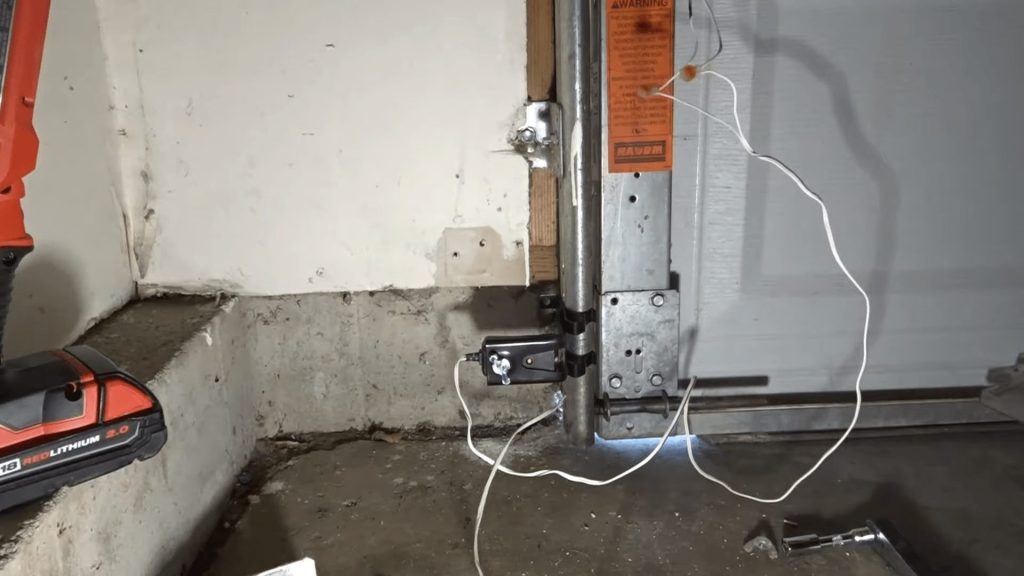How To Bypass Garage Door Sensors – Quick FIX
Our garages often house valuable possessions like cars, tools, and even recreational equipment.
Keeping them secure is a priority, and that’s where automatic garage doors with safety sensors come in.
These sensors prevent the door from closing on anything obstructing its path, ensuring the safety of people and objects.
However, there might be times when you’re tempted to bypass these sensors. Maybe the sensors seem misaligned, or perhaps you’re troubleshooting a malfunctioning opener.
Such sensor-based garage doors may lead to injuries. Around 20,000 people visit the emergency room each year due to injuries caused by garage doors, as reported by the U.S. Consumer Product Safety Commission. Most of the injuries are fingers, hand and head are reported.
While the urge to get your garage door working quickly is understandable, it’s crucial to understand the significant risks involved with bypassing safety features.
Why Garage Door Sensors Are Essential

Garage door sensors are more than just a convenience; they’re a safety necessity. These sensors use infrared beams to detect objects in the doorway. When the beam is broken by a person, pet, or object, the door stops closing, preventing serious injury or damage.
Here are some specific dangers of bypassing garage door sensors:
- Crushing Injuries: A malfunctioning sensor or a bypassed system could cause the door to close on someone or something underneath. This can lead to severe crushing injuries to people or pets, or damage to vehicles and other objects.
- Unintentional Entrapment: If a person is accidentally trapped in the garage with the door closed and the sensors are bypassed, they might not be able to escape if the opener malfunctions or loses power.
- Security Risks: Bypassing sensors can compromise your garage’s security. A disabled sensor would allow the door to close even if an object is blocking the path, potentially creating an opportunity for someone to break in.
Important Safety Disclaimer
The information in this post is for informational purposes only and should not be used to bypass garage door sensors. Disabling safety features can be extremely dangerous and lead to serious injury or property damage. If you’re experiencing issues with your garage door sensors, we strongly recommend contacting a qualified garage door technician for diagnosis and repairs.
Alternatives to Bypassing Sensors
Before considering bypassing sensors, here are some alternative solutions you can try:
- Check Sensor Alignment: Sometimes, misaligned sensors can cause malfunctions. Consult your garage door opener’s manual for instructions on realigning the sensors.
- Clean Sensor Lenses: Dirt and debris on the sensor lenses can disrupt the infrared beam. Carefully clean the lenses with a soft, dry cloth.
- Replace Dead Batteries: If your sensors are battery-powered, ensure the batteries are fresh and properly installed.
- Check Wiring Connections: Loose or damaged wiring connections can also cause sensor malfunctions. However, avoid attempting electrical repairs yourself unless you’re a qualified electrician.
Understanding Bypassing Methods (For Informational Purposes Only)
Please note: This section is for informational purposes only and should not be a guide for bypassing garage door sensors.
Various methods might be used to bypass sensors, but it’s crucial to understand the dangers associated with each. Here’s a brief overview (without instructions) to emphasize the risks:
- Holding the Wall Button: Some openers have a feature that allows the door to close continuously by holding the wall button. This feature might seem like a quick fix, but it bypasses the safety sensors and poses a serious risk of crushing injuries.
- Bypassing the Wiring: Tampering with the wiring of the sensors can be dangerous and should only be done by a qualified technician. Improper modifications can lead to electrical hazards and completely disable the safety features.
The Importance of Professional Help
If you’re experiencing issues with your garage door sensors, resist the urge to bypass them. Instead, contact a qualified garage door technician. They can diagnose the problem, perform repairs safely, and ensure your garage door opener functions correctly with all safety features intact.
Finding a Qualified Garage Door Technician
Here are some tips for finding a qualified garage door technician:
- Ask for Recommendations: Talk to friends, neighbors, or family members who have recently had garage door repairs done.
- Check Online Reviews: Many online platforms allow customers to leave reviews for service providers. Read reviews of local garage door repair companies to get a sense of their reputation and customer service.
- Verify Licensing and Insurance: Ensure the technician you choose is licensed and insured. This protects you in case of any accidents or property damage during repairs.
Conclusion
Bypassing garage door sensors is a risky proposition that can lead to serious consequences. Prioritize safety by keeping your garage door sensors functional and in good working order. If you suspect a problem, don’t hesitate to contact a qualified technician for repairs. Remember, a properly functioning garage door with working safety sensors offers peace of mind.
Related Articles:
- How to Pick a Door Handle Lock: A Step-by-Step Guide
- How To Program Liftmaster Garage Door Opener – Quick Guide

